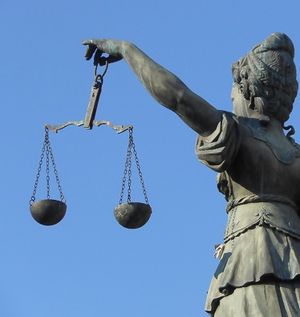By Dr. Ken Broda Bahm:
‘Fairness’ can sometimes get an unfair rap. Take the tendency to think that jurors fall into two different camps: the law-oriented jurors who are analytic and reason-based, and the fairness-oriented jurors who are emotional and feeling-driven. Like most statements that begin with ‘There are two kinds of people…,” this one also does not provide the full picture. The appeal of fairness can be as reason-based as the reliance on facts or law. When jurors emphasize fairness, they aren’t necessarily giving in to a visceral or sympathetic reaction to perceived injustice. They may instead be giving voice to an equities-based argument that is every bit as rational.
Recent brain research provides some intriguing support for the idea that fairness is more reasonable than emotional. Looking at a new functional Magnetic Resonance Imaging (fMRI) study (Yoder & Decety, 2014), researchers from the University of Chicago showed that when those with a greater sensitivity for justice evaluate just or unjust scenarios, they are more likely to use the sections of their brain associated with higher-order cognition, not the sections of the brain commonly associated with emotional processing. In other words, the “Justice Sensitives” (aka, “Bleeding Hearts”) were thinking their reactions, not feeling them. The study, summarized in the University of Chicago News, provides a reason for those who work in the law to give a second thought to what we mean by fairness. This post takes a look at the study and also shares some thoughts on practical ways litigators can address the rational bases for fairness appeals.
The Research: This is Your Brain on Fairness
Keith Yoder and Jean Decaty (2014) aimed to look into the mental processing of research participants in the act of making a judgment based on fairness. Step one was to see who was particularly sensitive to the general idea of justice. Applying a psychological measure called the Justice Sensitivity Inventory (another in a long list of scales that litigators and consultants should be using in supplemental juror questionnaires), the authors determined whether participants were high or low on that dimension.
Step two was to present scenarios that invoked a moral evaluation. In this case, they were shown videos illustrating people being treated either fairly (a passerby puts money in a beggar’s cup) or unfairly (a passerby kicks the begger’s cup away).
Step three was to watch the brain as participants rated those scenarios by applying praise or blame to the actors. The result was that among those most sensitive to justice, the researchers saw several regions light up: the right temporoparietal junction, right dorsolateral, and dorsomedial prefrontal cortex. Those regions are associated with processing the mental states of understanding and representing goals. That suggests reasoning over feeling. As Jean Decaty noted, “Individuals who are sensitive to justice and fairness do not seem to be emotionally driven. Rather, they are cognitively driven.”
The Advice: This is Your Case on Fairness
All cases invoke some dimension of fairness. At the same time, attorneys and consultants are sometimes tempted to see an unvarnished appeal to that fairness as a shortcut or a heuristic – a quicker and lazier path to a verdict in lieu of an actual evaluation of the facts, the law, and the evidence. Research showing that people are actually thinking their way to fairness, however, might be a sign that we should rethink these naïve views.
Legal scholars have offered some attempts to rehabilitate the idea of fairness. Most notable among these is John Rawls theory of ‘Justice as Fairness.’ But, more practically, I want to discuss a few themes that litigators can draw upon in order to establish or dispute what is fair. I’d suggest that in most situations, what is ‘fair’ boils down to three ‘R’s:
Results. The best measure of perceived fairness is outcome. End up disadvantaged, and the perception is that whatever caused that is unfair. The claim of “unjust enrichment” is probably as close as the law comes to acknowledging that some results are simply unfair, even without any other problem with the process of getting to that result.
Respect. People want to be seen as subjects and not objects – as independent entities and not as means to an end. It is significant, for example, that medical malpractice cases often arise not simply out of medical error, but also out of the belief that a patient or family has been slighted, ignored, or disrespected.
Reciprocity. Perhaps the most important indication of fairness is parity: What I give should match what I get. The power of reciprocity explains why persuaders are often keen on giving away gifts, or why litigation consultant bloggers, ahem, are keen on giving away free advice. Give something away and the subtle inducement is to get something in return. The scales of justice are an apt symbol for reciprocity: They should end up being even.
There are undoubtedly other elements of fairness that we could add to that list. But the critical point is that, when crafting general arguments, litigators shouldn’t just stop with the idea that “it’s fair,” or “it’s not fair.” Instead, focus on why it is or isn’t fair. Think about the reasons that would lead jurors to conclude that a result does or doesn’t line up with justice. After all, jurors are not just deciding as individuals, they are arguing as a group. A juror that feels unfairness, but is not able to articulate why, is a juror who is unlikely to sway any others to their side.
______
Other Posts on Fairness and Justice:
- A Mixture of Justice and Revenge: Target Juror Psychology in Awarding Damages
- Know the Costs of Plea-Based Justice
- Find the “Universal Morality” in Your Case Story
Yoder, K. J., & Decety, J. (2014). The Good, the Bad, and the Just: Justice Sensitivity Predicts Neural Response during Moral Evaluation of Actions Performed by Others. The Journal of Neuroscience, 34(12), 4161-4166.
Photo Credit: Michael Coghlan, Flickr Creative Commons
